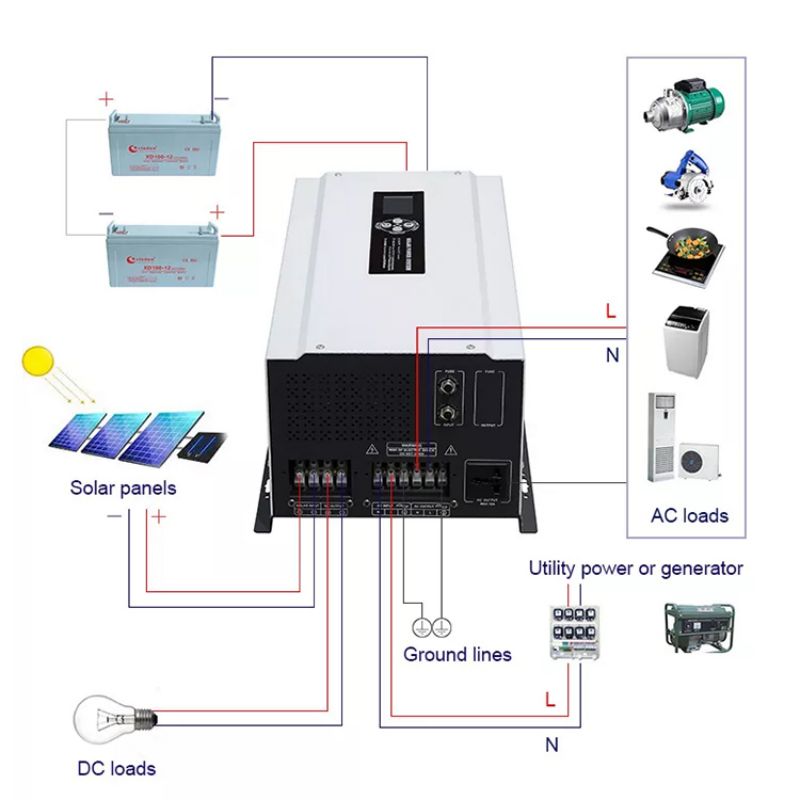What is a Frequency Inverter?
A frequency solar inverter, also known as a solar power inverter or PV (photovoltaic) inverter, is a type of inverter specifically designed for converting the direct current (DC) electricity generated by solar panels into alternating current (AC) electricity for use in our homes and businesses.
Solar panels produce DC electricity when exposed to sunlight. However, most of our electrical devices and appliances operate on AC electricity. A frequency solar inverter plays a crucial role in converting the DC power from solar panels into AC power that can be used to power our homes or fed back into the electrical grid.
In addition to converting DC to AC, a frequency solar inverter also manages and optimizes the power flow between the solar panels, battery storage systems (if present), and the electrical grid. It ensures that the solar energy generated is used efficiently and safely, allowing for the maximum utilization of the power generated by the solar panels.
Frequency solar inverters come in different types, including string inverters, microinverters, and power optimizers. String inverters are commonly used and are connected to multiple solar panels in series, while microinverters or power optimizers are connected to individual solar panels, providing more flexibility and enhanced performance.
Overall, a frequency solar inverter is an essential component of a solar power system, transforming the sun’s energy into usable electricity, facilitating power distribution within the system, and enabling efficient integration with the electrical grid or on-site power consumption.
Why Choose a Frequency solar Inverter?
There are several reasons why you may choose a frequency inverter for your solar power system:
1. Higher energy efficiency: Frequency Solar inverters typically have a higher energy conversion efficiency than other types of inverters. This means that they can convert a greater percentage of the DC power from your solar panels into AC power for use in your home or to feed back into the grid.
2.Better performance in low light conditions: Frequency solar inverters often feature advanced Maximum Power Point Tracking (MPPT) technology, which allows them to operate efficiently in low light conditions. This means you can continue to generate electricity from your solar panels even when sunlight is not at its peak.
3. Grid synchronisation: Frequency solar Inverters are designed to synchronise with the grid, allowing seamless integration of solar power into your existing electrical system. This means you can easily sell excess power back to the grid and potentially receive credits or incentives for the electricity you generate.
4. Wide voltage range: Frequency solar inverters typically have a wide voltage range, which means they can accommodate a variety of different solar panel configurations and sizes. This flexibility makes them suitable for small residential installations as well as large commercial systems.
5. Monitoring and control features: Many frequency solar inverters come with built-in monitoring and control features, allowing you to easily monitor the performance of your solar power system and make adjustments as needed. Some even offer remote monitoring capabilities, so you can keep an eye on your system from anywhere with an internet connection.
Overall, frequency solar inverters offer high efficiency, advanced features and flexibility, making them a popular choice for solar power systems.
Post time: Sep-01-2023
